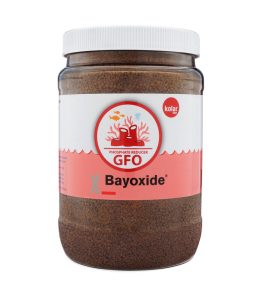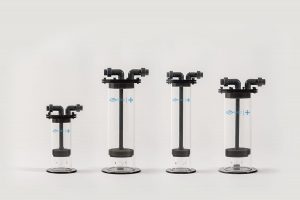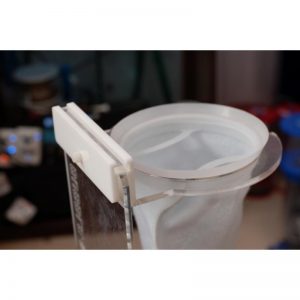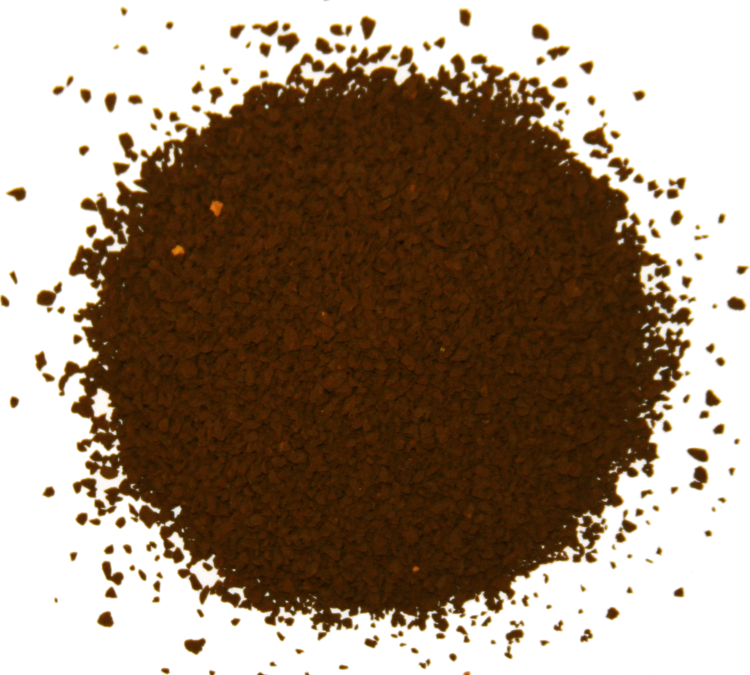Who out there uses GFO? I do and I love it. Because I do this as a business AND a hobby, I go through a lot of it. I use Kolar Labs because I love their honesty about where the product comes from. The particular GFO is called Bayoxide E 33 and is produced by a German company called Lanxess. I get 5 gallon buckets of it at a time.
The way I strive to conduct my own business is with a no BS approach and bare bones honesty. I love to give my business to companies who do the same. Kolar Labs attitude seems to be, “Here is the huge company that makes this stuff and we just buy tons of it and package it for the aquarium industry.”. No smoke and mirrors. No mysterious mumbo jumbo. I spoke with them in person at MACNA 2018 in Las Vegas, Nevada and I am completely satisfied that they know what they are doing.

If you are reading this, you likely know that the best way to utilize GFO is to run it in a reactor. If you didn’t, well, now you do. First off, it has a lot of fines (dust, small particles) so placing it in a media bag isn’t going to work. This would just create a major mess. So putting it in a reactor is the way to go but I have a couple thoughts about that as well. Kolar Labs says to use at an initial rate of 1 gram per gallon. FYI, 8 grams= 1 level tablespoon, 16Tbsp=1 cup. That is from their website. You would build up from there over time because rapidly removing phosphate from a reef aquarium can shock corals. I like to run GFO right off the bat of starting an aquarium, even before I put corals in. This way I am not fighting phosphate levels with corals in the system. If you are adding GFO for the first time to an older reef, just go slow and be careful.
Some of my favorite reactor brands, in no particular order are: My Reef Creations, NYOS, Precision Marine, GEO’s Reef just to name a few. Just be sure to get one that will adequately hold the amount you need for your size system. If anything, go bigger, not  smaller. GFO material is friable (Thanks Joe Yaiullo for pointing this out to me). This means it crumbles easily. If you pump too much water through it, it will just abrade itself into dust. When properly employed, the grains will slowly move and mix around itself but not actually become fluidized. You don’t want particles flying all the way to the top and spilling out of the reactor. But just in case this accidentally happens…
smaller. GFO material is friable (Thanks Joe Yaiullo for pointing this out to me). This means it crumbles easily. If you pump too much water through it, it will just abrade itself into dust. When properly employed, the grains will slowly move and mix around itself but not actually become fluidized. You don’t want particles flying all the way to the top and spilling out of the reactor. But just in case this accidentally happens…
Let’s talk about what this article is really about. As the title says, post filtration after a GFO reactor. I find that it is a smart idea to have your GFO reactor dump into a small filter sock because, well, you never know. Anyone who has ever had a GFO reactor pump GFO into their sump can tell you it’s not fun to clean up. Sometimes even large bubbles that might burp up through your reactor can cause GFO particles to be thrown out into your sump.
Several companies make add-on brackets that hold small 4″ filter socks. A couple that come to mind are CPR, SeaSide Aquatics, Vertex, and Somatic. Just be sure to find one that works with your sump configuration.

SeaSide Aquatics sock holder

Somatic sock holder
Just be sure that the one you choose will work with your sump lay out. Worse case scenario, you could just use a filter sock with a drawstring. Either way, making sure you don’t get GFO in your sump where your pump can suck it up and throw it into your system above is a good idea.
Thanks for reading!
Ben Johnson – Captive Aquatic Ecosystems – 713-385-1297 – ben@caecosystems.com – custom aquarium installation and scheduled maintenance in Houston, Texas and beyond.


Recent Comments